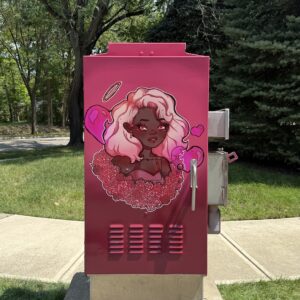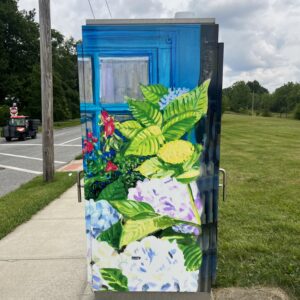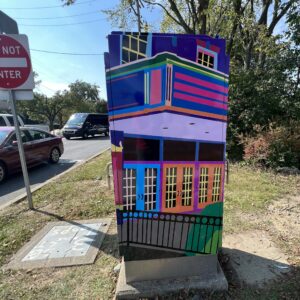What’s With Those Utility Box Wraps?

If you’ve driven through a city neighborhood lately, you may have noticed something unexpected: those once-drab metal utility boxes on street corners are now bursting with color, pattern, and even storytelling. What used to be gray, graffiti-prone hunks of metal are transforming into miniature works of public art. So what’s with those utility box wraps, and why are communities investing in them?
From Blight to Bright
Utility boxes—those bulky cabinets housing traffic signals, electrical controls, and communication systems—have long been an eyesore. Their plain surfaces practically invited tagging, stickers, and grime. City planners and local organizations saw an opportunity: why not turn them into canvases instead of liabilities?
an eyesore. Their plain surfaces practically invited tagging, stickers, and grime. City planners and local organizations saw an opportunity: why not turn them into canvases instead of liabilities?
Enter the utility box wrap. Using durable vinyl (the same type used for vehicle wraps), artists and sign shops can cover a box with weather-resistant designs. Suddenly, that dull corner fixture becomes an eye-catching piece of art, often reflecting the personality of the neighborhood.
A Canvas for Community Identity
These wraps are more than just decoration—they’ve become a way to tell local stories. Cities commission artists to design wraps that celebrate history, highlight cultural identity, or showcase community pride. In some neighborhoods, the artwork depicts famous residents, local wildlife, or historic landmarks. In others, abstract patterns or playful illustrations simply add vibrancy to the streetscape.
By weaving in local themes, these utility boxes help brand a community visually, just like murals and gateway signs do. They’re small-scale projects with big symbolic value.

Practical Benefits
While the artistic element is front and center, utility box wraps also serve a practical purpose. They:
- Reduce graffiti: Wrapped boxes are harder to tag, and when they are, vinyl surfaces are easier to clean or replace than bare metal.
- Protect equipment: Vinyl provides an added layer of protection from UV rays, rain, and salt, helping boxes last longer.
- Enhance safety: Bright designs can make the boxes more visible to pedestrians and drivers, reducing accidental bumps or collisions.
So, what looks like an art installation also doubles as a maintenance and safety solution.
Partnerships and Possibilities
Utility box wrap programs usually involve collaboration. Cities or utility companies supply the boxes; local arts councils or nonprofits run competitions for design submissions; and sign shops or print companies handle the production and installation. It’s an ecosystem where government, artists, and small businesses all benefit.
And it doesn’t stop at art. Some communities experiment with wraps that include educational elements, like native plant illustrations, QR codes linking to local history tours, or even seasonal themes that rotate throughout the year.
Why They Matter
At first glance, wrapping a utility box might seem like a small thing. But these projects change how people feel about their streets. They spark conversation, give artists exposure, and make neighborhoods feel safer and more welcoming. They’re a reminder that design isn’t just for billboards and storefronts—it’s for the everyday objects we pass without thinking.
So next time you see a colorful utility box, take a moment. You’re looking at a clever blend of art, design, and urban problem-solving—a little splash of creativity where you least expect it.
Click Here for More Information
Back
